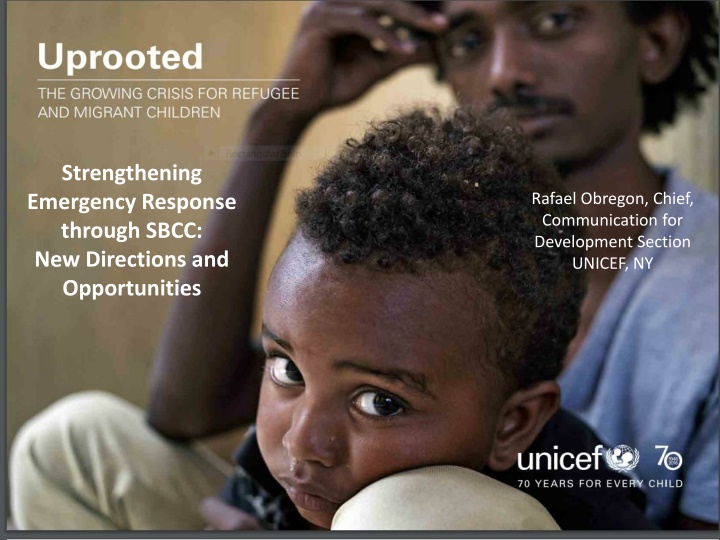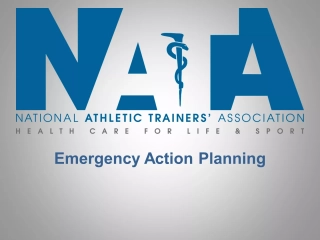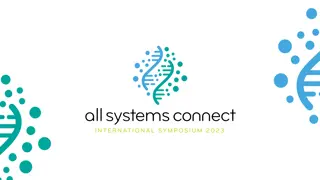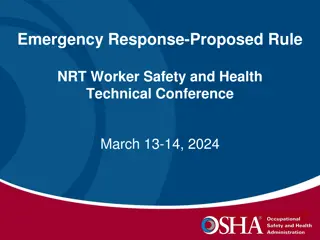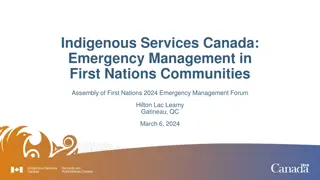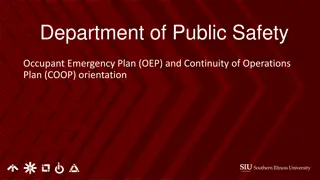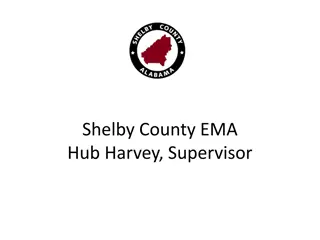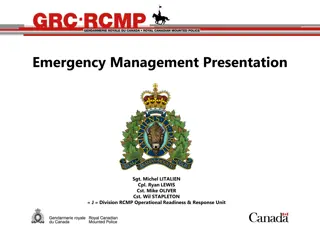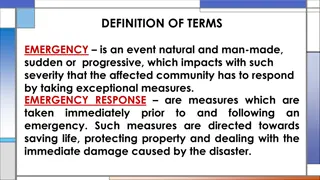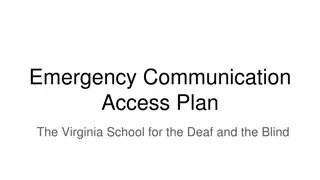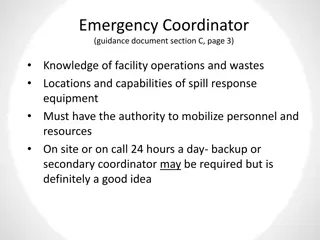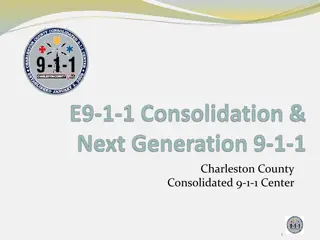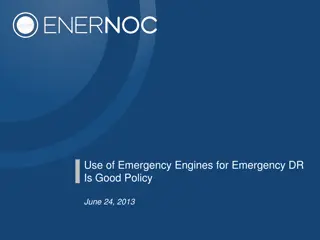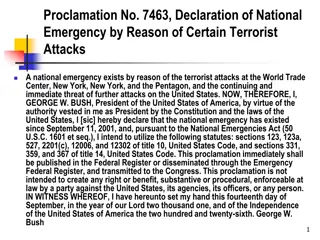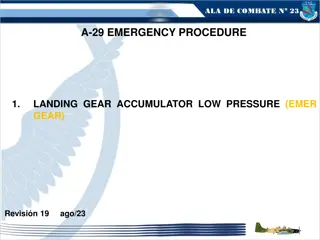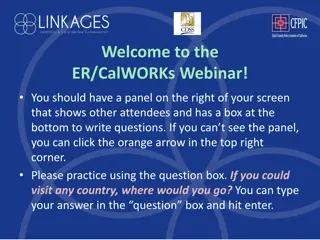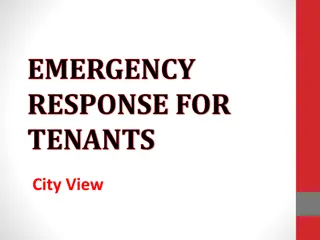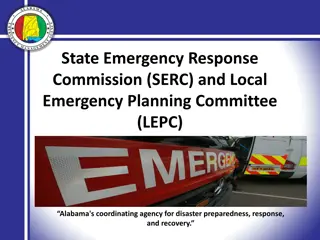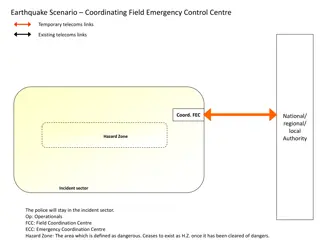Strengthening Emergency Response through SBCC: New Directions and Opportunities
This article discusses UNICEF's engagement in emergency response, lessons learned, strategic directions, and investments in public health emergencies. It explores the use of SBCC in global humanitarian architecture and post-2015 Ebola outbreaks, highlighting the importance of coordination, data utilization, and preparedness for future emergencies.
Download Presentation

Please find below an Image/Link to download the presentation.
The content on the website is provided AS IS for your information and personal use only. It may not be sold, licensed, or shared on other websites without obtaining consent from the author.If you encounter any issues during the download, it is possible that the publisher has removed the file from their server.
You are allowed to download the files provided on this website for personal or commercial use, subject to the condition that they are used lawfully. All files are the property of their respective owners.
The content on the website is provided AS IS for your information and personal use only. It may not be sold, licensed, or shared on other websites without obtaining consent from the author.
E N D
Presentation Transcript
Strengthening Emergency Response through SBCC: New Directions and Opportunities Rafael Obregon, Chief, Communication for Development Section UNICEF, NY
Outline SBCC in the Global Humanitarian Architecture UNICEF s SBCC engagement in Public Health Emergencies Lessons Learned Strategic Directions and Investments
Humanitarian Reform and the Cluster approach Predictable leadership and provider of last resort. Ensuring timely and effective responses Strengthening partnerships Improved strategic field- level coordination and prioritization, leading to fewer gaps and duplication. CHILD WASH CLUSTER NUTRITION CLUSTER EDUCATION CLUSTER GENDER BASED VIOLENCE AOR PROTECTION AOR
UNICEFs SBCC Engagement in Public Health Emergency Response Coordination Social Mobilization Pillar Co-lead Social Mobilization Pillar with MOH (e.g. Sierra Leone - Over 35 partners / Average 16 in each district; linkages to national Ebola response center; Standard Operating Procedures). Latin America (USAID-supported SBCC work in four countries)) Technical Support to Govt/CSO Partners on SBCC Implementation National campaigns; community engagement; capacity building (e.g. West Africa; Brazil) Leveraging of community-based platforms (e.g village committees in Guinea, FBOs) Evidence-based SBCC RapidPro platforms (u-Report in Sierra Leone; Liberia); KAP Studies (Ebola; Zika) Rapid Polling (e.g. trust in polio eradication efforts in Nigeria, Pakistan, Afghanistan) Digital Listening Tool in Zika outbreak to track rumors, information seeking. Cross-Sectoral Linkages SBCC support to other areas (e.g. back to school, child protection in West Africa) SBCC in support of Care and support to families affected by Zika - microcephaly
Post 2015 Ebola Outbreaks: Lessons and Implications Lessons Learned Implications for UNICEF Strengthen institutionalization and core SBCC capacity Coordination duplication due to lack of SOPs; multiple messaging Technical Response Slowapplication of SBCC principles (e.g. listening) Shape the global humanitarian architecture, including public health emergencies Local Capacity Strengthening of local networks, community-based organizations Global partnerships and platforms for rapid, predictable, more effective support Data and Evidence Better systems and use of data to feedback into response Strengthen development humanitarian nexus increasing focus on engagement in urbanized contexts Preparedness Proactive focus; ready-to-activate systems (national social mobilization pillars pillars)
Are we better prepared for the next emergency? Humanitarian Architecture (Common Services Platform) Coordinated with Clusters/IASC UN agencies/ INGOs/Networks Social Boost the evidence-based Pre-position data on a range of contextual, cultural and communication aspects Sciences/Anthropology Research Platform Developed globally with partners Regional hubs and country specific capacity and partners for mobilization Surge Capacity Mechanism Internal to UNICEF through academic partnerships Expand through regional partnerships Outbreak Communication Capacity 6
Are we better prepared, for the next emergency? Humanitarian Architecture (Common Services Platform) Coordinated with Clusters/IASC UN agencies/ INGOs/Networks Social Boost the evidence-based Pre-position data on a range of contextual, cultural and communication aspects Sciences/Anthropology Research Platform Developed globally with partners Regional hubs and country specific capacity and partners for mobilization Surge Capacity Mechanism Internal to UNICEF through academic partnerships Expand through regional partnerships Outbreak Communication Capacity 8
Inter Cluster Coordination Questions? Inter-cluster coordination is the mechanism through which clusters come together at national and sub-national level to coordinate the response through each stage of the humanitarian programme cycle.
